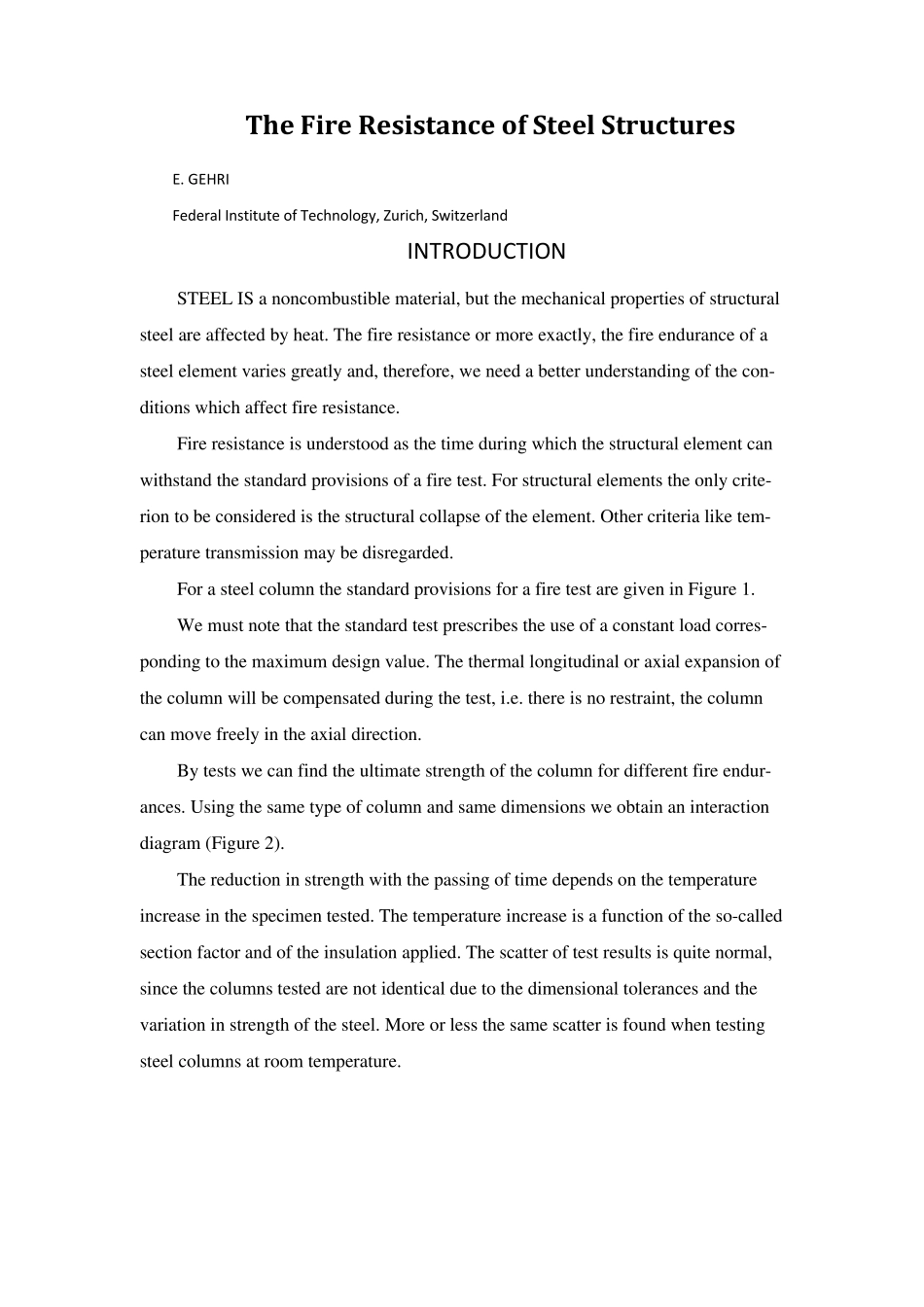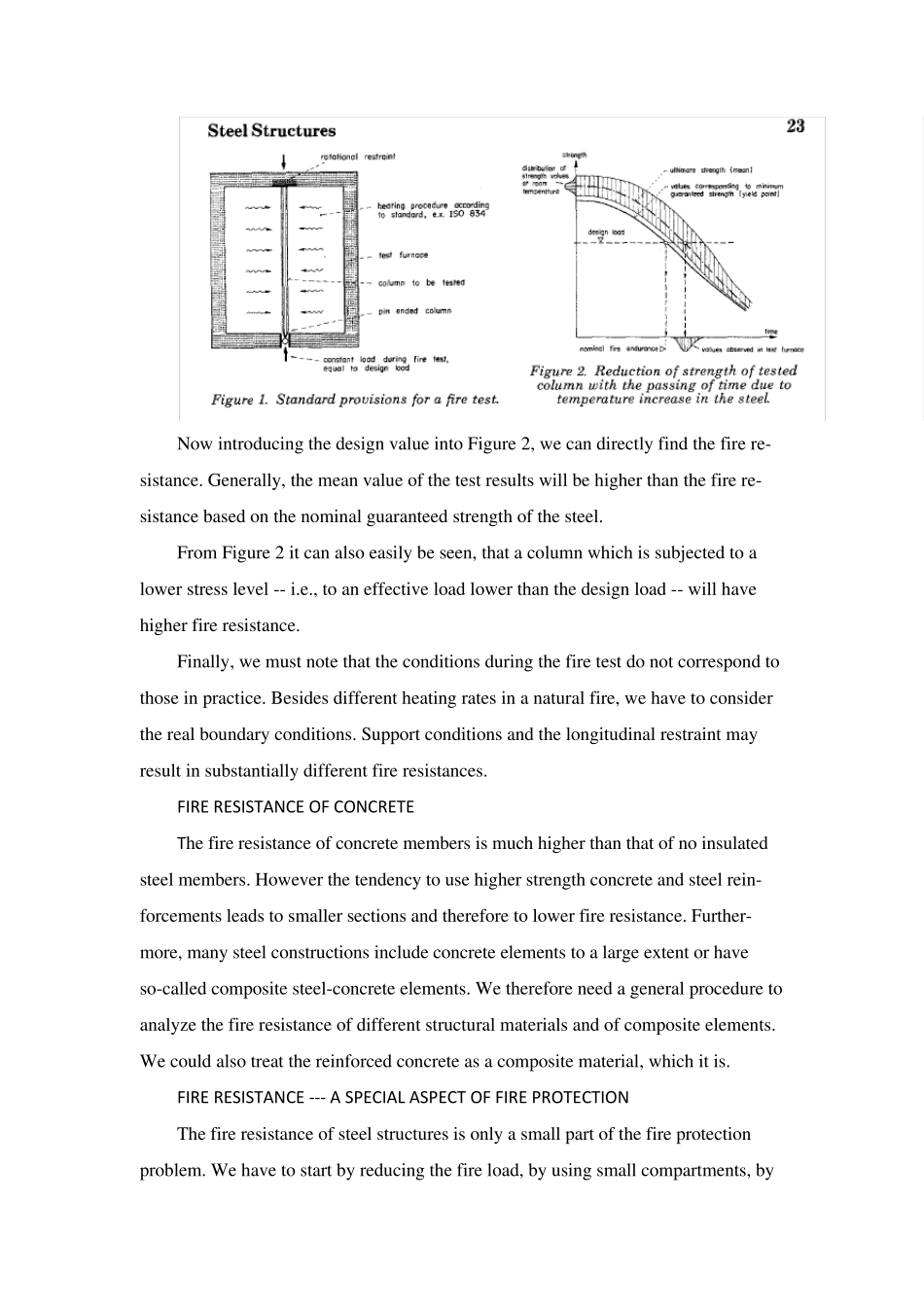The Fire Resistance of Steel Stru ctu res E. GEHRI Federal Institute of Technology, Zurich, Switzerland INTRODUCTION STEEL IS a noncombustible material, but the mechanical properties of structural steel are affected by heat. The fire resistance or more exactly, the fire endurance of a steel element varies greatly and, therefore, we need a better understanding of the con-ditions which affect fire resistance. Fire resistance is understood as the time during which the structural element can withstand the standard provisions of a fire test. For structural elements the only crite-rion to be considered is the structural collapse of the element. Other criteria like tem-perature transmission may be disregarded. For a steel column the standard provisions for a fire test are given in Figure 1. We must note that the standard test prescribes the use of a constant load corres-ponding to the maximum design value. The thermal longitudinal or axial expansion of the column will be compensated during the test, i.e. there is no restraint, the column can move freely in the axial direction. By tests we can find the ultimate strength of the column for different fire endur-ances. Using the same type of column and same dimensions we obtain an interaction diagram (Figure 2). The reduction in strength with the passing of time depends on the temperature increase in the specimen tested. The temperature increase is a function of the so-called section factor and of the insulation applied. The scatter of test results is quite normal, since the columns tested are not identical due to the dimensional tolerances and the variation in strength of the steel. More or less the same scatter is found when testing steel columns at ...


